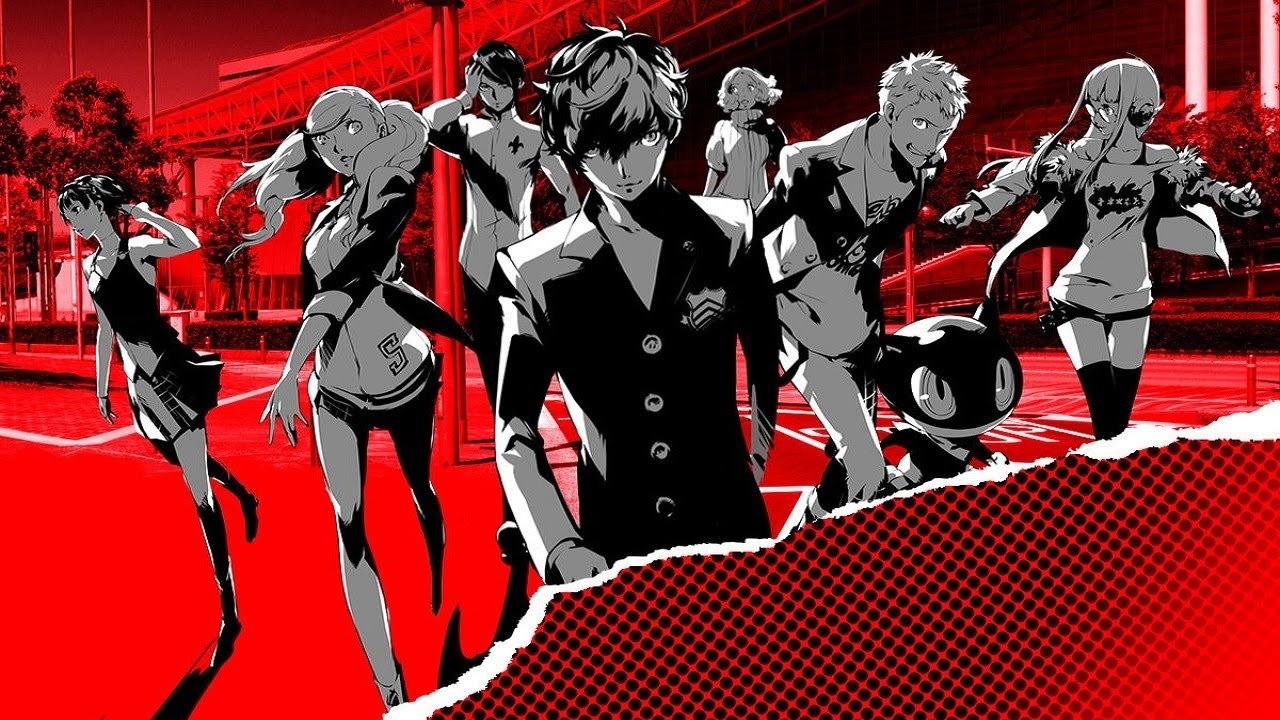Review: ‘Persona 5’

Neal Sweeney ’19 / Emertainment Monthly Staff Writer
Following a quite lengthy development period, the highly anticipated fifth entry in the Persona series has finally been released in the west, seven months after its Japanese release. Persona 5‘s also marked the series’s twentieth anniversary, with Revelations: Persona having released on September 20th, 1996.
So, what exactly is a Persona game? Well, the answer to that question has changed over time, but the series established its current format with the third game. Players take the role of a self-named second year high school student in Japan, particularly someone who has just transferred into a new school at the start of the academic year, which begins in April. Quickly, they discover some sort of turmoil that involves the supernatural and alternate realities, the existence of is only known by a small group of students. These students all wield the power of Personas, beings that emulate the strength of their hearts and allow them to fight Shadows, the evil beings that inhabit that world and cause chaos which is often orchestrated or influenced by people in the real world. While this is happening, players also live the life of a student; going to class, hanging out with friends, working part time jobs, and generally doing the things Japanese schoolkids do, aside from the whole Shadow thing.

But how does this look in the context of actually playing a game? The game is structured like our lives, into days. Every day the player decides what to do; do they want to hang out with their friend and go out for ramen? Or would they rather go into the other world and work to fight evil? The answer to this question might seem obvious at first, but it’s not so simple. Everything the player does in Persona feeds towards an ultimate goal; by working at a job, the player can make money to spend on equipment, and by spending time with friends, they can increase relationships. Formerly known as Social Links, Confidants in Persona can be anyone; friends alongside whom the player fights, or the woman who runs the clinic down the street.
Personas level up and gain new skills as they’re used, and having a wide swatch of them can prove incredibly useful. Two or more Personas can also be fused to create new Personas. Combat often involves checking how an enemy responds to specific attack types and using it on them, causing them to be knocked down. Knock everyone down and capitalize on the advantage. Persona 5 reintroduces the ability to talk to fallen foes for the purpose of requesting money or items, as well as recruiting them as Personas. They player can also opt to perform an All-Out Attack which deals heavy damage and has an incredibly stylish animation. While fighting, the player makes their way through dungeons that are specifically themed and much more dynamic then they have been in the past. Instead of battling through similar floors, the dungeons in Persona 5 offer a lot more variety and change things up, which helps it stay interesting and feel less like a grind.

But why go into these dungeons and fight? The player has fallen into unfortunate circumstances at the hands of a corrupt adult who got them in trouble with the law. After transferring to Shujin Academy, they quickly see another instance of corruption, and at the same time a mysterious app appears on the player’s in-game phone. This app causes them and a fellow student to be transported across a Metaverse into different realities in which they can learn how corrupt human desires take the form of a Palace, which serve as the game’s dungeons. In the first Palace, the player meets a mysterious friend, who informs them that by stealing the Treasure in the castle they can change the Palace owner’s heart and make them confess to their sins. This group takes on the name of the Phantom Thieves, and they steal the hearts of those who are corrupt or abusive. Persona games are well-known for crafting likeable, realistic characters, and Persona 5 is surely no exception.
There’s one other thing Persona is well known for, and that is its style. Persona 5 is very colorful and well-rendered, but it doesn’t just have pretty graphics. The game’s menus are incredibly well-designed and dynamic, with tons of moving elements and sound effects. Speaking of sounds, the series composer Shoji Meguro has returned, and the game’s acid jazz mix is unique in the best way, calmer sounds in the late nights and incredible spunk during action sequences. Additionally, the game has well-rendered portraits for its characters and well-designed outfits, from typical school clothes to proper thieving apparel.

Persona 5 is an incredibly complicated game with lots of systems and different things going on, but it all works well together. The aesthetic and themes are cohesive, and all of the tasks in the game feel fulfilling and work towards an objective. It’s going to be a long year for just another Shujin student—in fact, some reports are saying the game will take one hundred hours to complete. It’s quite a long journey, but for someone with a love for dungeon crawling, amazing aesthetics and music, hanging out with friends, and saving the world, then Persona 5 is sure to hit the mark.